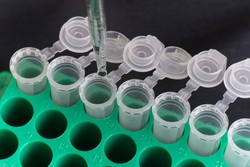New cell therapy tools for Parkinson's
Parkinson's disease (PD) is the result of degeneration and death of dopamine-producing neurons in the midbrain. Replacement of the old dopaminergic nerve cells with human embryonic neurons that can differentiate and compensate for the dopamine deficit would be an ideal therapeutic option. So far, patient response to transplantation has been variable and in some cases led to lack of coordination and spasms. Further testing is urgently required but there is a shortage of embryonic dopaminergic neurons. As alternative strategies and sources for neurons have to be exploited, the DOPANEW(opens in new window) (Dopaminergic neurons for cell therapy in Parkinson's disease) project investigated two alternative dopamine producing cell populations. In the mammalian forebrain, the researchers analysed molecular changes during differentiation. In a mix of embryo cells, they developed new strategies to increase the proportion of dopaminergic neurons. The DOPANEW team studied gene expression of RNA from both dopaminergic and GABAergic lineages in the forebrain and produced an extensive gene expression dataset. This is now available on a specialised website for all users. Functional studies of key genes in the screen identified several repressors of dopaminergic fate. Genetic inactivation of some of these factors (Zic1 and Zic2 transcription factors) gave rise to supernumerous dopaminergic neurons. Other repressors included Vax1 and microRNAs miR-7a and the miR-200 family, which is implicated in adult neuron differentiation. When the researchers looked at differentiation, they identified markers for subpopulations of neurons in the mixture, the main protein being integrin associated protein (IAP). Sorting these cells accordingly, they found that the cells lacking pluripotency differentiated into mature dopaminergic neurons. Moreover, when transplanted, the cells showed functional recovery in rats. DOPANEW research results indicate that molecular tools developed may be able to differentiate certain populations of neurons in the forebrain, the basis of transplantation therapy for PD patients. Sorting using markers such as IAP promises to be a critical tool for production of cell therapy products for PD.







